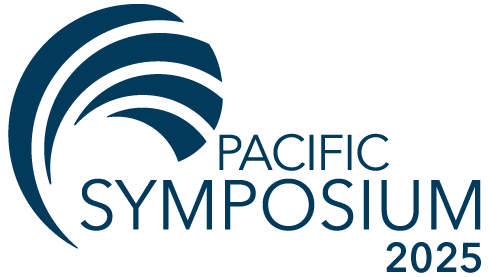Building Confidence in Taking Pulses
Pulse-taking is clearly full of potential that is well within reach. Insight into the story the pulse tells comes in many ways beyond hearing explanations. Simple steps will explore how to keep the broad picture in focus, while details provide a fully understandable and satisfying experience in pulse-taking. Open to beginners and experts, as we are all a bit of both.
Five Element Applications to Manage Challenging People and Circumstances
We will follow the Five Elements of Chinese medicine through their expression in the self-protective responses found in animal predator-prey relationships as described in Western neuroscience and polyvagal theory. As healers, we have two tasks in working with trauma survivors: attend to the acute and essential balance and regulation that has been disturbed by traumatic stress, and help them to more successfully respond to life as it presents itself in the future.
Birth to Death: A Primer for Chinese Sexology
To introduce the concepts of sexology, this session will look at the larger cycles of life. We will examine how Chinese philosophy views the broad transitions we make according to the Five Elements. What drives puberty? Why do we experience midlife crises? How does Earth affect our goals?
Dermatology in Chinese Medicine
Skin disorders account for nearly 25% of all visits to a medical practitioner. Despite their prevalence and the resources put into this field, many patients remain dissatisfied with the results of conventional treatments. Chinese herbal medicine can induce spectacular, lasting change in intractable conditions such as acne, eczema, rosacea, and psoriasis, yet many practitioners lack the training and experience to produce optimal results. This course will cover the fundamentals of dermatology in Chinese medicine.
Tools to Enhance Longevity and Healthy Aging*
Using Chinese medicine as a foundation, this workshop will explore complementary tools, lifestyle techniques, and nutritional supplements to help patients over forty achieve their best results—tools that will be usable immediately.
The Antibiotic and Anti-inflammatory Effect of Chinese Herbs
Both considered heat from the Chinese medicine perspective, infection and inflammation commonly occur together, but pathology and treatment strategies are quite different. “Heat” and “heat-clearing” are too vague to describe the pathology of disease, as heat may present in many disorders and symptoms. Additional information is beneficial, such as antipyretic, antibiotic, antiallergic, or anti-inflammatory effects. Learn how to accurately diagnose disease and select the suitable herbal treatment based on both Chinese herbology and Western pharmacology.
Chinese Herbal Syrups
Herbal syrups have been prescribed for at least a thousand years. Today we tend to think of them for cough or for children, but many syrups were described as having powerful supplementing effects. Syrups take time to make but can last for months. They are convenient to take and generally have a pleasant taste. We will discuss syrup-making, try it ourselves, and taste a few.
Radiant Aging: Ancient and Modern-Day Secrets of Anti-Aging*
Learn approaches and modalities to promote peak appearance and longevity. We will discuss mindset, biohacking, combining micro-needling with cosmetic acupuncture, cosmetic acupuncture protocols for a variety of facial presentations, and body reshaping. Dr. Phillips will tie this all together and share specific strategies to incorporate this niche into your practice today.
Neuro-Myofascial Anatomy and Pain Patterns from the Thoracolumbar Junction
The thoracolumbar junction is a region of the spine, consisting of T12-L2, from which many key joints, muscles, and viscera are innervated. When dysfunctional, it can contribute to painful trigger point formation, and cause pain in the low back, pelvis, and groin. We will explore the neural, myofascial, and channel anatomy of this region and look at common pain patterns that frequently present in the clinic.
Aging Well: Next Steps
Using Chinese medicine as a foundation, this course will introduce you to high- and low-tech strategies that can improve quality of life at any age, but especially after 40 years of age. Strong health maintenance practices, with an emphasis on enhancing the body’s resistance to disease, have become a popular and much-needed topic in the United States and world over.
